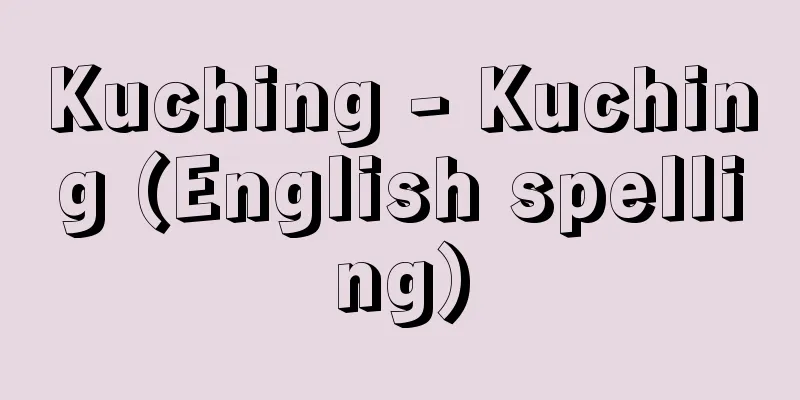Jin Ping Mei

|
A full-length novel from the Ming Dynasty in China. It is set in the time of Huizong of the Song Dynasty, and depicts the collusion between government officials and merchants in the Ming Dynasty through sex and money. 100 chapters. It is named after one character each from the names of the protagonist Ximen Qing's two concubines, Pan Jinlian and Li Ping'er, and Jinlian's maid, Chunmei. It is believed to have been written by a single author born in Shandong in the early Wanli period (1573-1619), the latest of the four great classic novels, and is unique in that it does not have a long history of creation like the other three. It had a great influence on Wu Jingzi and Cao Xueqin in the early Qing Dynasty, and was the driving force behind the creation of "Confucian Scholars" and "Dream of the Red Chamber." It is a masterpiece that stands at the origin of realism and social criticism literature in China. The author is said to be Xiao Xiao Sheng of Lanling (Shandong), and although the Shandong dialect can be heard in the dialogue, his real name is unknown. Xin Xinzi, who wrote the preface, is probably the same person as Xiao Xiao Sheng. According to the records of Yuan Hongdao, at least a portion of a copy of "Jin Ping Mei" existed in the late 1590s, and the complete copy was kept only in the home of Liu Yanbai. According to one theory, the model for the character was Mei Guozhen, the father-in-law of Yanbai's brother, and "Jin Ping Mei" is said to be a parody of "Now Ping Mei." It is believed to have been published in Suzhou shortly after the summer of 1613, and is probably the "Jin Ping Mei Cihua" (Story of Jin Ping Mei) by Longzhu Ke of Eastern Wu (Suzhou) with a preface from 1617. After this, several editions were produced with revised versions of the Cihua version by the Chongzhen era (1628-1644). However, when an edition with a critique by Zhang Zhupo was produced in the Kangxi era (1662-1722), the earlier editions were overshadowed. This series is known as the First Class Strange Book. In the first place, "Jin Ping Mei" is said to be an excerpt from "Suikoden," and it expands on an episode in the story of Wu Song, the affair between Pan Jinlian, the wife of Wu Song's brother Da, and Ximen Qing, and saves the two who were supposed to be killed by Wu Song. Therefore, it can be said that the text version related to "Suikoden," which leaves these traces, is closer to the original. The story is about Ximen Qing, a drug merchant and a major figure in Qinghe County, Shandong Province, who takes his friend's wife Li Ping'er, who is in prison, as his sixth wife, and becomes a nouveau riche with her fortune. He expands his business while relying on his connections to bribe the prime minister and obtain an official position, and the warp of the story is the process of Ximen Qing's life in the bedroom with his six wives and concubines, and the latter part describes how Ximen Qing's family is torn apart after he dies suddenly after being forced to take too many aphrodisiacs by Pan Jinlian. During this time, the sex life of Ximen Qing and the women is carefully described, which led to the misunderstanding that this is an erotic novel, and a sequel was produced that only followed this aspect, but it can be said that the purpose of "Jin Ping Mei" is not to do this, but rather to fully depict the intricacies of negotiations between men and women. [Hidetaka Otsuka] "Translated by Shinobu Ono and Kyuichi Senda, 'The Great Series of Chinese Classical Literature, 35-37, Jin Ping Mei' (1967-69, Heibonsha)" ▽ "Translated by Shinobu Ono and Kyuichi Senda, 'Jin Ping Mei', all 10 volumes (Iwanami Bunko)" 15th installment. The wives and concubines of Ximen Qing enjoying lantern viewing. Preface published in 1695 (34th year of the Kangxi era). Print from Kagematsuken's collection, National Diet Library . "Jin Ping Mei" Source: Shogakukan Encyclopedia Nipponica About Encyclopedia Nipponica Information | Legend |
|
中国、明(みん)代の長編小説。時代を宋(そう)の徽宗(きそう)の世に仮託し、明代の官商癒着の様相を、色と金(かね)に絡めて描く。100回。主人公西門慶(さいもんけい)の2人の妾(めかけ)潘金蓮(はんきんれん)、李瓶児(りへいじ)と、金蓮の小間使い春梅(しゅんばい)の名から1字ずつをとって命名されている。四大奇書中もっとも遅い万暦(1573~1619)前期に、山東生まれの一作者の手になったと推定され、他の3書のように長い成立史をもたない点において、際だって異色である。清(しん)初の呉敬梓(ごけいし)と曹雪芹(そうせっきん)に大きな影響を与え、『儒林外史』『紅楼夢』を生み出す原動力ともなった。中国におけるリアリズム文学、社会批判文学の源頭にたつ傑作である。作者は蘭陵(らんりょう)(山東)の笑笑生(しょうしょうせい)とされ、会話中に山東方言もみえるが本名などはわからない。序を書いた欣欣子(きんきんし)もおそらく笑笑生と同一人物であろう。『金瓶梅』の写本は、袁宏道(えんこうどう)の記録により、少なくともその一部が1590年代後半には存在していたこと、完本が劉延白(りゅうえんはく)の家にのみ蔵されていたことが知られる。一説によれば、延白の兄弟の義父にあたる梅国楨(ばいこくてい)がモデルであり、『金瓶梅』は「今評梅」をもじったとされる。その刊行は1613年夏以降ほどなく、蘇州(そしゅう)でとされるが、おそらく東呉(蘇州)弄珠客(ろうしゅかく)の1617年の序をもつ『金瓶梅詞話(しわ)』がそれにあたろう。この後崇禎(すうてい)年間(1628~44)までに詞話本を改訂した数種の版が行われた。しかし康煕(こうき)年間(1662~1722)に入って張竹坡(ちょうちくば)の評を付した版が行われるに及び、それ以前の版は圧倒されてしまった。この系統は第一奇書本とよばれる。そもそも『金瓶梅』は『水滸伝(すいこでん)』の逸典ともいわれるように、その武松(ぶしょう)物語中の挿話、武松の兄大(だい)の女房潘金蓮と西門慶の情事を敷衍(ふえん)し、武松に殺されるはずの2人を生き延びさせたものであった。それゆえ、この痕跡(こんせき)を残す『水滸伝』との関係の詞話本のほうが原作により近いといえよう。 物語は山東省清河県の薬種商で顔役でもある西門慶が、獄中の友人の妻李瓶児を第6夫人に迎え、その財産を手に入れてにわか成金となり、商売の手を広げる一方、つてを頼って宰相に賄賂(まいない)し、官職を手に入れのし上がってゆく過程を縦糸に、6人の妻妾との閨房(けいぼう)生活を横糸に描く前段と、西門慶が潘金蓮に媚薬(びやく)を飲まされすぎて急死したあとの一家離散のありさまを描く後段とからなる。この間西門慶と女たちの性生活が丹念に描かれ、ために好色小説と誤解され、この面だけを受け継いだ続書も輩出したが、『金瓶梅』のそれはためにするものではなく、あくまでも男女の交渉の委曲を尽くすことを目的としたものといえよう。 [大塚秀高] 『小野忍・千田九一訳『中国古典文学大系35~37 金瓶梅』(1967~69・平凡社)』▽『小野忍・千田九一訳『金瓶梅』全10冊(岩波文庫)』 第15回。灯籠見物を楽しむ西門慶の妻妾たち。1695年(康煕34)序刊 影松軒蔵板国立国会図書館所蔵"> 『金瓶梅』 出典 小学館 日本大百科全書(ニッポニカ)日本大百科全書(ニッポニカ)について 情報 | 凡例 |
>>: Kim Pyŏng-hun (English spelling)
Recommend
Epicathrea - Epicathrea
...Interspecific hybridization is rare, but inter...
MSH - MSH
Melanocyte-stimulating hormone (MSH). Three types ...
Boiled and dyed
〘Other Ma Lower 1〙 Nishi-mu 〘Other Ma Lower 2〙① To...
Wilhelmshoehe - Wilhelmshoehe
...The city was formed by combining the old town ...
Hoover Dam
A gravity arch dam completed in 1935 in the Black ...
vernal conjunctivitis
…It is accompanied by severe itching along with r...
Cavia tschudii (English spelling) Caviatschudii
…[Tadaaki Imaizumi]. … *Some of the terminology t...
Lautal (English spelling)
A casting aluminum alloy made by adding about 4% c...
Depopulation and overpopulation - Kasokamitsu
Depopulation and overpopulation are phenomena that...
Kawamura Zuiken
Year of death: June 16, 1699 (July 13, 1699) Year ...
Claus de Werve (English spelling)
…He created the group of the duke and his wife an...
Diode - Diode (English spelling)
A general term for a two-terminal solid-state dev...
Superheated steam - Superheated steam
→Heating steam Source: Asakura Publishing Nutritio...
Salamandridae
…General term for amphibians in the family Salama...
Malacca - Malacca (English spelling)
A port city in the southwest of the Malay Peninsu...









